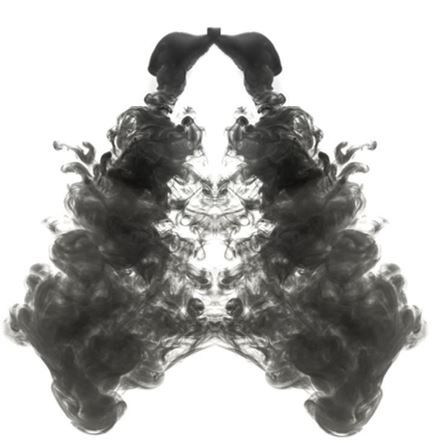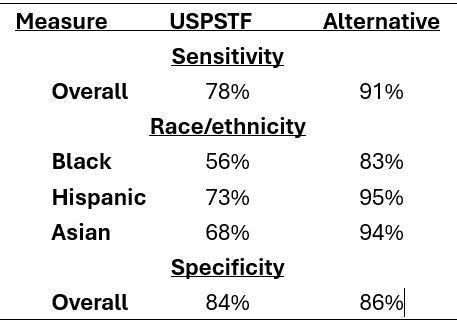- Clinical Technology
- Adult Immunization
- Hepatology
- Pediatric Immunization
- Screening
- Psychiatry
- Allergy
- Women's Health
- Cardiology
- Pediatrics
- Dermatology
- Endocrinology
- Pain Management
- Gastroenterology
- Infectious Disease
- Obesity Medicine
- Rheumatology
- Nephrology
- Neurology
- Pulmonology
Alternative Lung Cancer Screening Criteria Expand Eligible Population vs USPSTF Guidance
Simple criteria for lung cancer screening identified more people who would highly benefit, including more from racial/ethnic minority groups.
An alternative set of lung cancer screening (LCS) criteria had higher sensitivity and specificity for identifying people who would benefit most from the low-dose CT (LDCT) scan than criteria recommended by the United States Preventive Services Task Force (USPSTF), according to research published online August 19 in the Annals of Internal Medicine.
©alesmunt/stock.adobe.com

Specifically, the alternative criteria had 91% sensitivity vs USPSTF sensitivity of 78%, and specificity of 86% vs 84%, respectively, (both P <.001). For racial and ethnic minority groups, the alternative screening criteria provided more significant gains in sensitivity vs the USPSTF criteria at similar specificity (Table, below left).
Further, according to study authors the alternative criteria identified high-risk, high benefit groups excluded by current USPSTF criteria, ie, Black and other racial/ethnic minorities, individuals at high benefit, those with long duration of smoking (≥40 years ) but at lower intensity (<20 pack years) and those who smoked heavily but quit more than 15 years before the study.
Screening for lung cancer with LDCT has been shown to reduce mortality rates among individuals at high risk for the disease. Lead author Lauren Kearney, MD, of Boston University’s Chobanian & Avedisian School of Medicine in Massachusetts, and colleagues, cite updated LCS screening guidelines issued by the USPSTF in 2021 that reduced the starting age for screening from age 55 to 50 years and adjusted duration of smoking history from 30 pack years to 20 pack years. The revisions aimed to help identify lung cancer in earlier stages when it is more treatable and also to help reduce racial and ethnic disparities in eligibility compared with the 2013 USPSTF statement.
Currently, USPSTF recommends LCS for individuals who meet all of 3 criteria: age 50 to 80 years, a smoking history of at least 20 pack-years, and currently smoking or having quit within the previous 15 years. Uptake of the early detection screening continues to be low, however, and modeling studies reviewed by the research team suggest that “the USPSTF criteria may not be optimally effective, efficient, or cost-effective because many people who would derive high benefit from LCS [are still] ineligible."
Uptake of the early detection screening continues to be low, however, and modeling studies reviewed by the research team suggest that “the USPSTF criteria may not be optimally effective, efficient, or cost-effective because many people who would derive high benefit from LCS [are still] ineligible."
Kearny et al used model-based projections to explore whether the use of alternative and simplified LCS criteria could identify a greater proportion of individuals who would derive "high benefit" from regular cancer screening. “High benefit” was defined for the study as “gaining an average of at least 16.2 days of life from 3 annual screenings.” The selected alternative criteria expanded the duration and amount of smoking, to include people who smoked any amount every year for at least 40 years and people aged 60 to 80 years with a history of at least 40 pack-years of smoking.
Investigators tapped data for from the 1997-2014 National Health Interview Survey (NHIS) for development of potential alternative screening criteria, and from the 2014-2018 NHIS and the 2022 Behavioral Risk Factor Surveillance System to compare the USPSTF criteria to the selected alternative criteria for sensitivity and specificity for identifying individuals with greatest eligibility for LCS. The final evaluation set numbered 31,975, a group authors said matched the trends in recent years for older adults who have lower pack-year history and more quit-years.

The team found, based on model projections, that use of the alternative criteria significantly increased the number of people eligible for LCS with higher sensitivity and specificity compared with the USPSTF guidelines, particularly among racial and ethnic groups, as noted.
According to the study findings, the simple criteria compared with the USPSTF criteria, were also more specific in identifying individuals not considered high benefit in both the NHIS (88% vs. 86%; P < .001) and the BRFSS 2022 (83% vs. 81%; P < .001) data sets.
To be clear, no simple criteria will have “perfect specificity” for identifying individuals with potential for high benefit from LCS, Kearney and colleagues wrote, adding that the alternative criteria explored in this study did outperform the USPSTF. However, “By definition, only the full prediction model has perfect specificity.” Assessing individualized risks and benefits requires shared clinical decision making as well as a prediction model, they said.
“The [simple alternative lung cancer screening criteria] we identified would result in more effective screening, lead to better support of the ethical principle of ‘equal management for equal risk,’ and substantially reduce racial disparities,” Kearney and colleagues wrote. “These…easy-to-remember criteria that use information already routinely collected for LCS decisions represent a way to improve or augment current eligibility criteria.”
They also suggest that the approach in this study to systematically examine simple screening selection strategies “may be useful for other cancer screening and prevention methods.”
